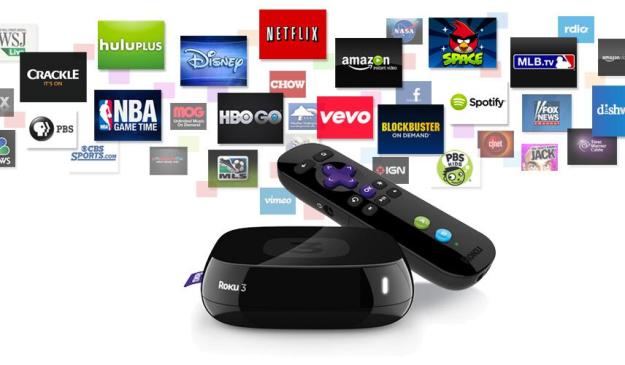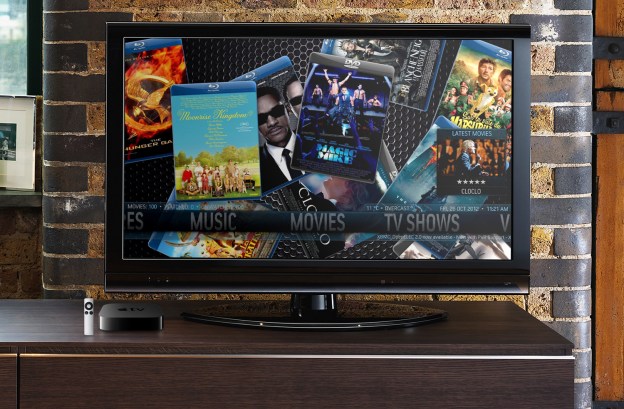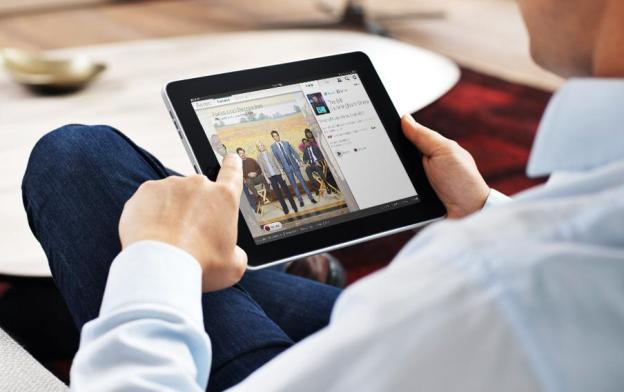
Just six months ago, industry analysts were already prognosticating the demise of the over-the-top (OTT) set-top box (if you’re not familiar, that ridiculous nomenclature refers to little add-on boxes like the Roku and Apple TV which deliver movies, TV and music available via the Internet to our home entertainment systems). But it would seem the analysts may have gotten this one wrong. Both consumers and manufacturers are embracing OTT boxes, and the numbers paint an interesting picture of what the future of TV might look like.
In fact, the OTT video market is expected to see some dramatic growth in the coming years. The catch is, longstanding broadcast and content delivery business models stand to get in the way, so that picture of the future of TV remains a little bit hazy.
While metrics like OTT revenue may mean little to viewers in the grand scheme, they are a sign of just how powerful consumer trends can be. In a nutshell, OTT revenue is made up of all the subscriptions consumers pay for watching anything from Netflix, Hulu Plus, Amazon Prime, iTunes, CinemaNow and so on — plus the advertising dollars they attract.
A report from ABI Research found OTT video revenue exceeded $8 billion in 2012, 57% of which came from North America. They project revenue to hit at least $20 billion by 2015, though it’s unclear if the North American share will actually increase or decrease by that time. What is clear is that there’s over 50% growth in the U.S. and Canada over the last two years, and that looks to continue.
The reason why is because subscription models, like Netflix and Hulu Plus, for example, are gaining in popularity in a big way, says Michael Inouye, senior analyst at ABI Research, who helped author the report. ABI defines OTT content as mid to long form videos, which excludes much of the user-generated stuff typically found on YouTube, Vimeo and other similar sites or services. It also cuts out personal video consumers create and view at home.
Netflix accounts for about 33% of all the Web traffic in the U.S., with YouTube gaining ground in second at 17%.
The main drivers behind this are the growing number of connected devices — media players, Blu-ray players, smart TVs, streaming boxes, smartphones, tablets — along with higher broadband penetration rates, as consumers seemingly clamor for faster Internet speeds. Better modems and routers that can handle the extra bandwidth and distribute multiple video streams in HD are helping create smoother viewing experiences, making it possible to watch streaming video on-demand in full 1080p HD.
But it didn’t start out quite like that. Netflix and Hulu weren’t household names until more recently, and the Apple TV really was just a “hobby”, even if it offered a promising look into what on-demand online content could be like. The problem was the content, which was lacking, and then the learning curve associated with getting to it.
“Initially, services were limited and the user experience was variable, especially some of the earlier platforms that were sluggish and slow,” says Inouye in an interview. “Many consumers didn’t know what to expect or what they could do with these connected devices. (Smartphones and tablets), in particular, have helped take the app and connected experience mainstream.”
That might be an understatement. Sandvine, a firm that monitors and measures bandwidth usage, released its “Global Internet Phenomena Report” this month, noting that Netflix accounts for about 33% of all the Web traffic in the U.S., with YouTube gaining ground in second at 17%. Hulu Plus still has some catching up to do, mustering only 3%. While that doesn’t necessarily mean 50% of all Web surfers are streaming video, it does indicate a huge number of people are watching a lot of online video, which requires far more bandwidth than music, photos or eBooks.
To help put things in perspective, consider that a two-hour movie might be 4GB in size, roughly equivalent to 1,000 songs in compressed formats (MP3, AAC), 2,000 photos shot at 8-megapixels or over 3,000 eBooks. Netflix reportedly has a catalog of 13,000 different movies and TV shows, yet not a single megabyte from those is actually stored on the devices you use to view them. Instead, data is measured not by where the content is stored, but rather how much data is going back and forth to stream it to those devices.

And yet, while growing fast, all this OTT content is still just a drop in the bucket of the worldwide pay-TV business. In 2012, total pay-TV revenue hit $238 billion globally, making it clear that the money is still in traditional media because advertisers won’t spend anywhere near as much for online video, despite how many eyeballs are already watching.
Part of the reason might be because of ratings. Media executives recently grumbled that they’re hesitant to offer more live programming online because Nielsen doesn’t measure Web ratings the way it does traditional TV audiences. Those audiences are down, and some in the industry believe that it’s partly because they’re tuning in online.
“Content holders and pay-TV service providers are ensuring premium content remains behind predefined barriers as much as possible,” says Inouye. “They want to ensure the market moves and evolves at a pace and manner that they desire to avoid a repeat of the growing pains the music industry faced as consumers migrated from CDs to digital audio files and services.”
Streaming services like Netflix are the opposite because they act more like utilities; you pay a monthly fee to access as much as you want in a buffet-like interface
In other words, change may be coming too quickly for their liking, and advertisers have been reticent about paying more for online ads. But that probably won’t last too long. ABI’s report notes that current revenue from subscription services sits at 58% in North America, but will drop to less than 32% by 2018. The key in that stat is the drop would represent a fall in revenue share and not a mass move away from streaming video services. More ads would probably make up the difference, leading to potentially more and more content being pushed online.
“Netflix is currently a huge presence in the OTT space and over time, as more consumers embrace digital distribution channels, we expect the other distribution channels, like TV on-demand, electronic sell-through and advertising to have stronger growth rates,” says Inouye.
Electronic sell-through (EST) describes how you buy a copy of a media file for storage on your own hard drive. This can include restrictions on how it can be played, like the Digital Rights Management (DRM) that Apple and others use for video, but have since abandoned for music. Apple’s iTunes Store, particularly for TV shows and movies, fits right into that profile. Streaming services like Netflix are the opposite because they act more like utilities; you pay a monthly fee to access as much as you want in a buffet-like interface.
Some startups smell an opportunity there. Aereo has been a disruptive force because it is accused of stealing broadcasters’ free over-the-air signals and reselling them to consumers, who can stream them live on Web browsers and mobile devices. The subscription-based service doesn’t pay any fees to rebroadcast the content, and the networks argue it has no right or authorization to stream them, either. Aereo has already expanded out of its New York base, first to Boston, and next to the Atlanta area on June 17. Another 20 markets are expected to follow across the country by year’s end. The company’s unofficial goal is to attract 20 million subscribers, which would put it right in line with the other big streaming players.
The upstart company won the first salvo of what looks to be a drawn out court battle, and may force traditional broadcasters to reach online audiences on the devices they use most. ABC recently announced it would stream live content to iPads as part of a pilot project in New York and Philadelphia.

“Aereo itself is not yet a real threat, it’s the business model that worries content holders,” says Inouye. “We’re not necessarily anticipating (pay-TV operators) adopting the same micro antenna array technology like Aereo, but it could impact negotiations at the bargaining table, which might limit retransmission fees.”
Aereo isn’t the first to butt heads with the broadcasters or content holders, and probably won’t be the last. Companies like Ivi TV (over-the-air retransmissions) and Zediva (DVD rental service where consumers “rented” a player) tried before but both lost and continue to fight in court.
CBS and Fox have angrily threatened to pull over-the-air broadcasts and move to a pay-TV model or limit sports and new shows to pay-TV operators, thereby cutting off households that rely on those free broadcasts.
While mobile devices are the focus for what Aereo is doing, TV and streaming box manufacturers are trying to find the right formula for your living room. A “Connected Home” study done by NPD Group found that almost half of home entertainment devices in the U.S. are connected to the Internet, but that many don’t really use those features.
The primary shift has been the trickling exodus from desktops and laptops to tablets for watching video.
Internet-enabled TVs, including smart TVs, are hooked up only 30% of the time for online access, according to NPD. Blu-ray players don’t fare much better at 32%. Despite outnumbering them, Blu-ray players will be overtaken by streaming boxes like Apple TV and Roku next year, based on NPD’s projections.
With Amazon and Microsoft both rumored to be entering the streaming hardware space, it’s a market that could heat up even further.
“Consumers have been purchasing Blu-ray players in part for the streaming video apps like Netflix. Many of these devices have a relatively fixed set of applications, whereas in contrast, the user interfaces of streaming media players have been developed to offer an expanding ecosystem of content. Connected TVs also generally provide the same thing,” says John Buffone, director of devices at NPD’s Connected Intelligence service.
Even though gaming consoles have plenty of streaming and media player features, they haven’t been driving up streaming movie or TV viewership, he adds. The primary shift has been the trickling exodus from desktops and laptops to tablets for watching video.
Buffone also touches on Netflix’s current dominance, citing the company’s strategy of eschewing its own streaming box by spreading out its service across almost every home entertainment and mobile device available instead. “We found that 40% of connected TVs, either by themselves or via other devices, are watching Netflix, with YouTube and Hulu Plus following,” says Buffone.

That’s only going to grow, and Netflix’s recent penchant for exclusive content could also make an impact. There are no figures to show it yet, but Netflix did see an increase of another two million subscribers in the first quarter alone, coinciding with the launch of the well-received government drama House of Cards, starring Kevin Spacey. Netflix CEO Reed Hastings has already said more exclusive content is coming, with fans of Arrested Development waiting for the show’s revival to come to the streaming service on May 26.
“We see other subscription streaming providers following suit with Hulu Plus on the vast majority of connectable devices and Amazon also focusing on original programming to provide consumers a compelling reason to have another subscription,” says Buffone.
This experimentation could have implications on how you watch what you want. With all the talk of “cord cutting” to substitute pay-TV subscriptions with streaming services, Inouye suggests that the two actually complement each other. The reason why is because traditional distribution channels still have viewership and licensing restrictions that favor the stuff they own and broadcast.
Sports programming is a good example, since pay-TV operators have a stranglehold on that. But even if sports and other content were offered in an a la carte OTT scenario, content owners will hate giving anything away for free. Add up a handful of subscriptions to different services or channels covering that content, and the cost might not be far off to what pay-TV is today.
“OTT isn’t the only side evolving, since the cable operators and their ‘TV Everywhere’ services will start to extend beyond the home,” says Inouye. “In effect, the pay TV operators are starting to add more ‘OTT-like’ services, which suggests the question we should be asking ourselves: at what point does OTT simply become pay TV?”
Editors' Recommendations
- Best streaming devices for 2024: Apple TV, Roku, Fire TV, and more
- Apple Music’s lossless audio on Apple TV isn’t enabled by default. Here’s how to fix that
- The most common Apple TV problems and how to fix them
- How to set up your TV for Super Bowl Sunday
- MLS Season Pass in 2024: How to watch every game on Apple TV




